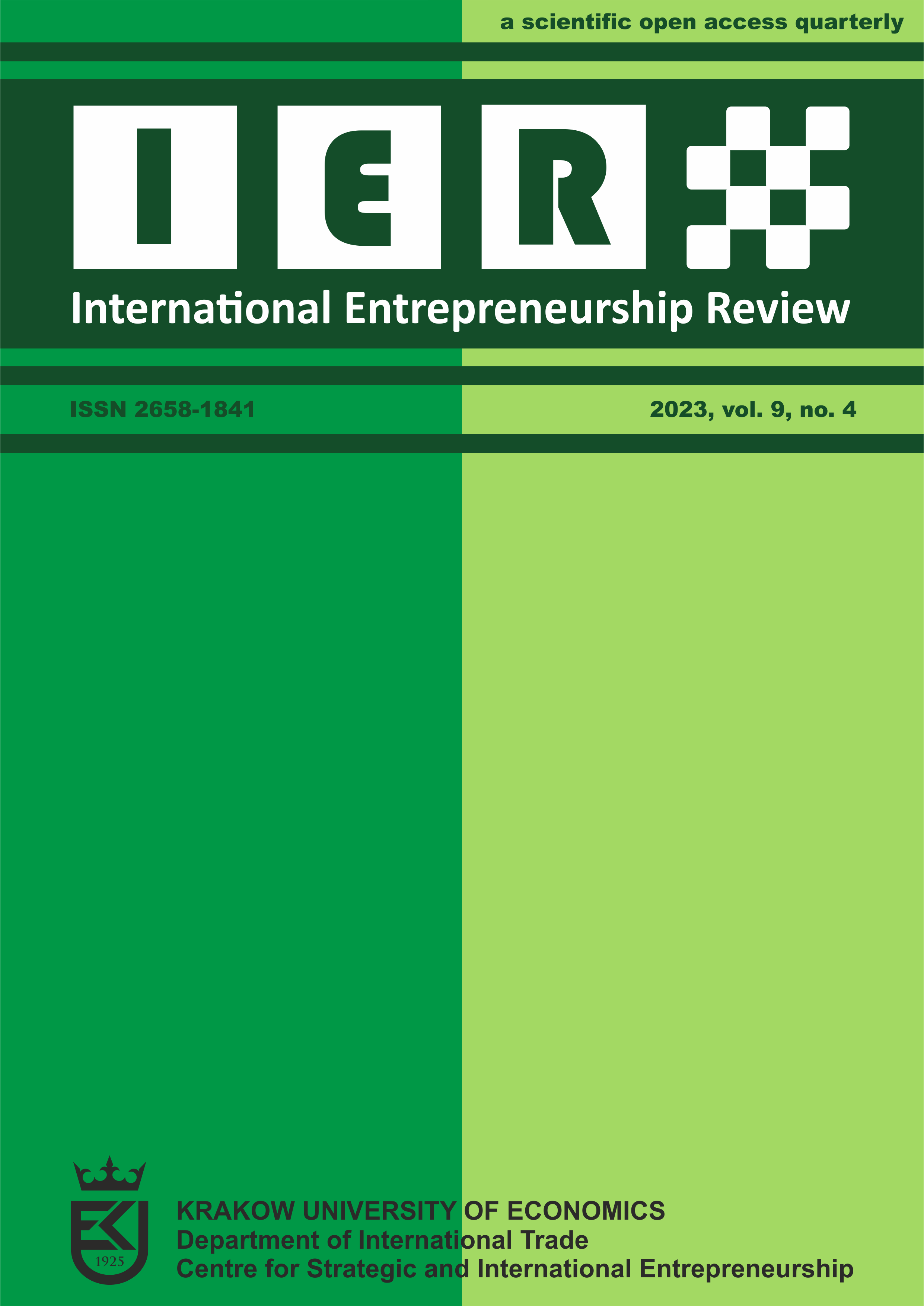The ICT service trade and goods trade: Are they complementary in the digital era?

Abstract
Objective: This article aims to examine whether the exports of information and communication technology (ICT) services are complementary to trade in ICT goods and overall merchandise exports.
Research Design & Methods: We used panel regression models (log-log specification, Driscoll-Kraay robust standard errors accounting for cross-sectional dependence, heteroscedasticity, and serial correlation) to explore how the ICT service exports depend on trade in ICT goods (both exports and imports) and total merchandises exports. The research sample covered data for 37 developed economies over the 1998-2017 period.
Findings: The results show that both the exports and the imports of ICT goods are complementary to the exports of ICT services. We also identified complementarity between total merchandise exports and ICT service exports. Moreover, global demand for services and broadband digital connectivity have been proven to be significant determinants of ICT service exports.
Implications & Recommendations: The detected dependencies imply that in the digital era, export-promoting policies should not treat trade in goods and trade in ICT services separately. Moreover, policymakers should consider factors such as broadband digital connectivity and world demand as important drivers of ICT service exports.
Contribution & Value Added: This study provides new evidence on determinants of one of the most rapidly growing export categories, i.e. the exports of ICT services. We identified three sources of potential complementarities arising in the digital era between trade in goods and services. Moreover, while most researchers examined the role of traditional internet, we tested our models for broadband connectivity as a determinant of ICT service exports.
Keywords
ICT services exports, digital connectivity, information and communication technology, ICT merchandise trade, trade in services, digital trade
Author Biography
Marta Wajda-Lichy
Assistant Professor at the Department of Macroeconomics, Cracow University of Economics, Poland. Her research interests include international trade, open economy macroeconomics, and economics of regional integration.
Kamil Fijorek
Assistant Professor at the Department of Statistics, Cracow University of Economics, Poland. His research interests include bankruptcy prediction, energy economics, and panel data analysis.
Sabina Denkowska
Assistant Professor at the Department of Statistics, Cracow University of Economics, Poland. Her interests focus on methods of mathematical statistics, including panel methods, multiple testing procedures, propensity score matching, and their applications in socio-economic research.
References
- Auboin, M., Koopman, R., & Xu, A. (2021). Trade and innovation policies: Coexistence and spillovers. Journal of Policy Modeling, 43(4), 844-872. https://doi.org/10.1016/j.jpolmod.2021.02.010
- Ariu, A., Breinlich, H., Corcos, G., & Mion, G. (2019). The interconnections between services and goods trade at the firm-level. Journal of International Economics, 116, 173-188. https://doi.org/10.1016/j.jinteco.2018.10.005
- Aquilante, T., & Vendrell-Herrero, F. (2021). Bundling and exporting: Evidence from German SMEs. Journal of Business Research, 132, 32-44. https://doi.org/10.1016/j.jbusres.2021.03.059
- Driscoll, J.C., & Kraay, A.C. (1998). Consistent covariance matrix estimation with spatially dependent panel data. Review of Economics and Statistics, 80(4), 549-560. https://doi.org/10.1162/003465398557825
- Eichengreen, B., & Gupta, P. (2013). Exports of services: Indian experience in perspective. Indian Growth and Development Review, 6(1), 35-60. https://doi.org/10.1108/17538251311329540
- Eichengreen, B., & Gupta, P. (2015). The Real Exchange Rate and Export Growth: Are Services Different?. SSRN Electronic Journal, https://doi.org/10.2139/ssrn.2579533
- Eurostat database (2022). Data retrieved from https://ec.europa.eu/eurostat/data/database on September 30, 2022.
- Gnangnon, S.K. (2021). Effect of Multinateral Trade Liberalizatiion on services exports diversification. Journal of Economic Studies, 49(6), 1117-1136. https://doi.org/10.1108/JES-01-2021-0057
- Hoekman, B., & Mattoo, A. (2013). Liberalizing trade in services: Lessons from regional and WTO negotiations. International Negotiation, 18(1), 131-151. https://doi.org/10.1163/15718069-12341251
- López González, J., & Ferencz, J. (2018). Digital Trade and Market Openness. OECD Trade Policy Papers, 217, OECD Publishing, Paris. https://doi.org/10.1787/1bd89c9a-en
- Miroudot, S., & Cadestin, C. (2017). Services in Global Value Chains: Trade patterns and gains from specialization. OECD Trade Policy Papers, 208, December 2017. https://doi.org/10.1787/06420077-enOECD
- Nath, H.K., & Liu, L. (2017). Information and communications technology (ICT) and services trade. Information Economics and Policy, 41, 81-87. https://doi.org/10.1016/j.infoecopol.2017.06.003
- Nordås, H.K. (2010). Trade in goods and services: Two sides of the same coin?. Economic Modelling, 27(2), 496-506. https://doi.org/10.1016/j.econmod.2009.11.002
- Nordås, H.K., & Rouzet, D. (2017). The Impact of Services Trade Restrictiveness on Trade Flows. World Economy, 40(6), 1155-1183. https://doi.org/10.1111/twec.12424
- Sahoo, P., & Dash, R.K. (2014). India’s surge in modern services exports: Empirics for policy. Journal of Policy Modeling, 36(6), 1082-1101. https://doi.org/10.1016/j.jpolmod.2014.10.006
- Sahoo, M., Babu, M.S., & Dash, U. (2019). Asymmetric effects of exchange rate movements on traditional and modern services exports: Evidence from a large emerging economy. Journal of International Trade and Economic Development, 28(4), 508-531. https://doi.org/10.1080/09638199.2018.1561744
- Wajda-Lichy, M., Fijorek, K., Denkowska, S., & Kawa, P. (2022). The impact of information and communication technology on services exports: Evidence from developed and developing economies. International Entrepre- neurship Review, 8(3), 69-80. https://doi.org/10.15678/IER.2022.0803.05
- WDI database (2022). World Development Indicators data retrieved from World Bank https://databank.worldbank.org/source/world-development-indicators on September 30, 2022.
